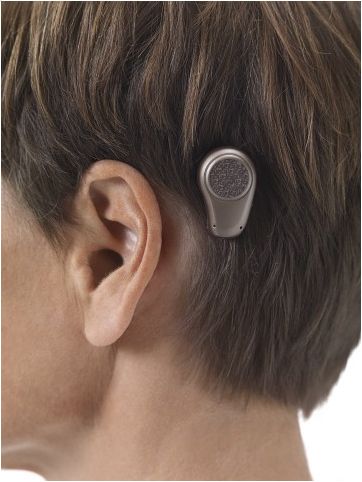
A guide to bone-anchored hearing aids
The U.S. Department of Health and Human Services reports 28.8 million U.S. adults could benefit from using hearing aids.
Many people who experience hearing loss think they can get by without hearing aids. In reality, by putting off a hearing test and not obtaining hearing aids, these people are missing more than they think.
The American Speech-Language-Hearing Association reports hearing loss can cause problems at work, at home, and with friends. Hearing loss can cause you to miss important information, ask others to repeat themselves frequently, and can even lead to memory problems. In children, hearing loss can lead to learning and social problems, causing them to fall behind in school.
Knowing the four kinds of hearing loss can help inform which type of hearing aid is best for you.
1. Sensorineural - A loss of hearing due to issues with the inner ear or hearing nerves
2. Conductive - The outer and middle ear do not properly transmit sound due to either an anatomical abnormality or obstruction
3. Mixed - Both conductive and sensorineural factors contribute to loss of hearing
4. Auditory Neuropathy Spectrum Disorder - Damage to the inner ear or hearing nerve interrupts accurate processing of sound
While there a multitude of hearing systems and devices, hearing aids can be split into two primary categories: conventional and bone anchored.
Conventional hearing aids have been around for over one hundred years and amplify sounds. Bone-anchored hearing aids were first developed in the 1970s and convert sounds to vibrations. These hearing aids have advanced dramatically since their conception, and now they are smaller, better, and more comfortable than ever before.

How they work
Bone-anchored hearing aids have both an internal and external component. Internally, a small post is anchored to the mastoid bone, located just behind your ear. This post is made of titanium and connects to an external speech processor through an abutment. The external speech processor converts sounds to vibrations, which are then transmitted through the post and sent directly to the inner ear, bypassing the middle ear.
Conventional hearing aids are fitted to rest within your ear and use air conduction to amplify sounds. Bone-anchored hearing aids are anchored behind the ear and convert speech sounds to vibrations. Traditional hearing aids transmit sound through the outer and middle ear, while bone-anchored aids transmit sounds directly to the inner ear.
Both children and adults can benefit from bone-anchored hearing aids. This type of hearing aid works best for people who experience conductive hearing loss (meaning their outer or middle ears do not transmit sound correctly), as well as people who have one-sided deafness. Individuals with mixed hearing loss also can be candidates.
Patients who are unable to wear traditional hearing aids, whether they have frequent ear drainage or aural atresia (a condition where the ear canal does not develop properly) can also benefit from bone-anchored hearing aids.
There are signs and symptoms of hearing loss you can look for in both children and adults. If you suspect you or a loved one may have a degree of hearing loss, the Reid Hearing Center has several easy, quick, and pain-free diagnostic tools to check your hearing health.
After you've had your hearing tested, discussing different hearing aid options with a Reid Hearing Center audiologist is the next step in ensuring you are provided with the best hearing aid for you. If you're a candidate for bone-anchored hearing aids, an outpatient surgical procedure is required to implant the internal post. This post will integrate with the bone, and in 90 days the external component can be attached with the abutment and programmed for your specific hearing loss.
Reid Hearing Care offers four conveniently located Hearing Centers, all of which provide a full scope of state-of-the-art services. Click here to request an appointment with Reid Hearing Care.

